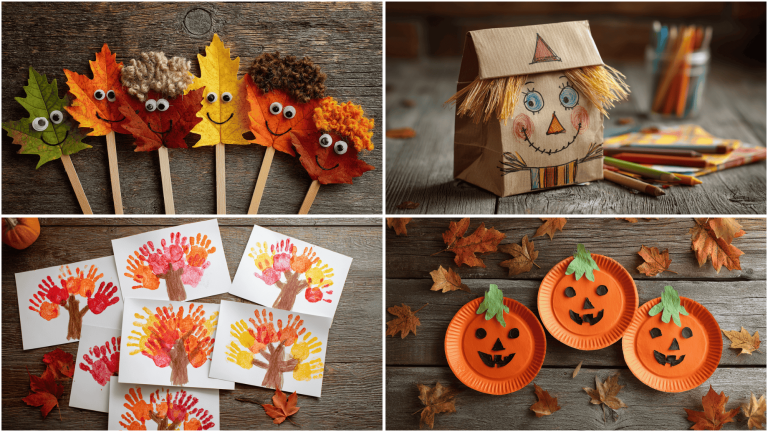11 Top Music and Movement Activities for Learning
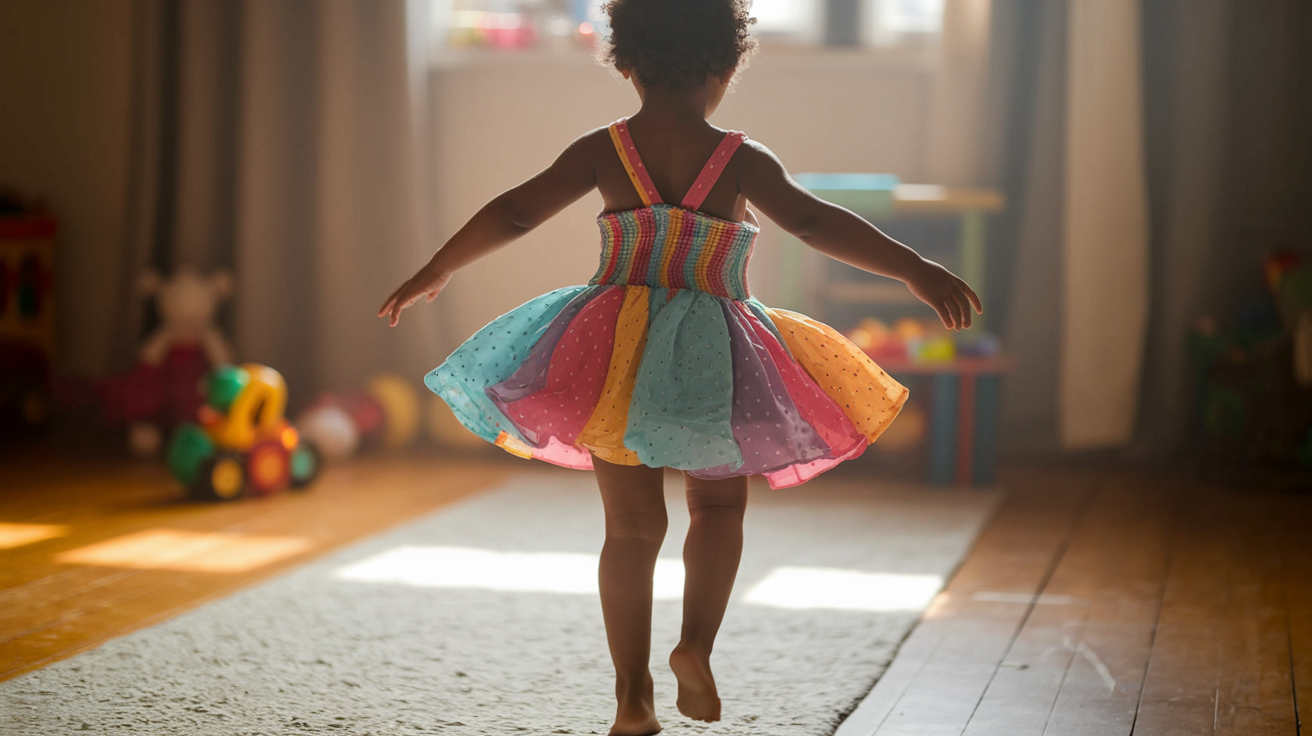
Get ready to turn up the volume on learning, because when kids move to music, magic happens! Music and movement activities aren’t just about having fun (though your little ones will have a blast).
Did you know that children who participate in music and movement activities show improved math skills?
The rhythm and patterns in music actually help develop the same brain areas used for mathematical thinking!
Picture this: your toddler isn’t just dancing around the living room; they’re developing coordination, rhythm, and social skills all at once!
If you’re a parent looking to add more joy to playtime or an educator wanting to energize your classroom, these activities offer the perfect blend of entertainment and education. Time to dance your way to smarter, happier kids!
What Are Music and Movement Activities?
Music and movement activities combine rhythm, melodies, and physical motion to create powerful learning experiences that feel like pure fun!
These can include simple finger plays, energetic dance parties, or acting out songs with silly motions – anything that gets kids moving to the beat.
When children dance, clap, and groove to music, their brains simultaneously connect areas that control movement, language, and memory.
This magical combo works perfectly for toddlers loving simple hand motions, preschoolers enjoying dance games, and elementary kids mastering complex rhythms. It’s brain-building disguised as playtime!
Best Music and Movement Activities for Kids
Ready to turn up the fun and get those little bodies moving? These music and movement activities combine the joy of dancing, singing, and playing to help kids develop coordination, rhythm, and social skills, all while having a blast!
1. Freeze Dance
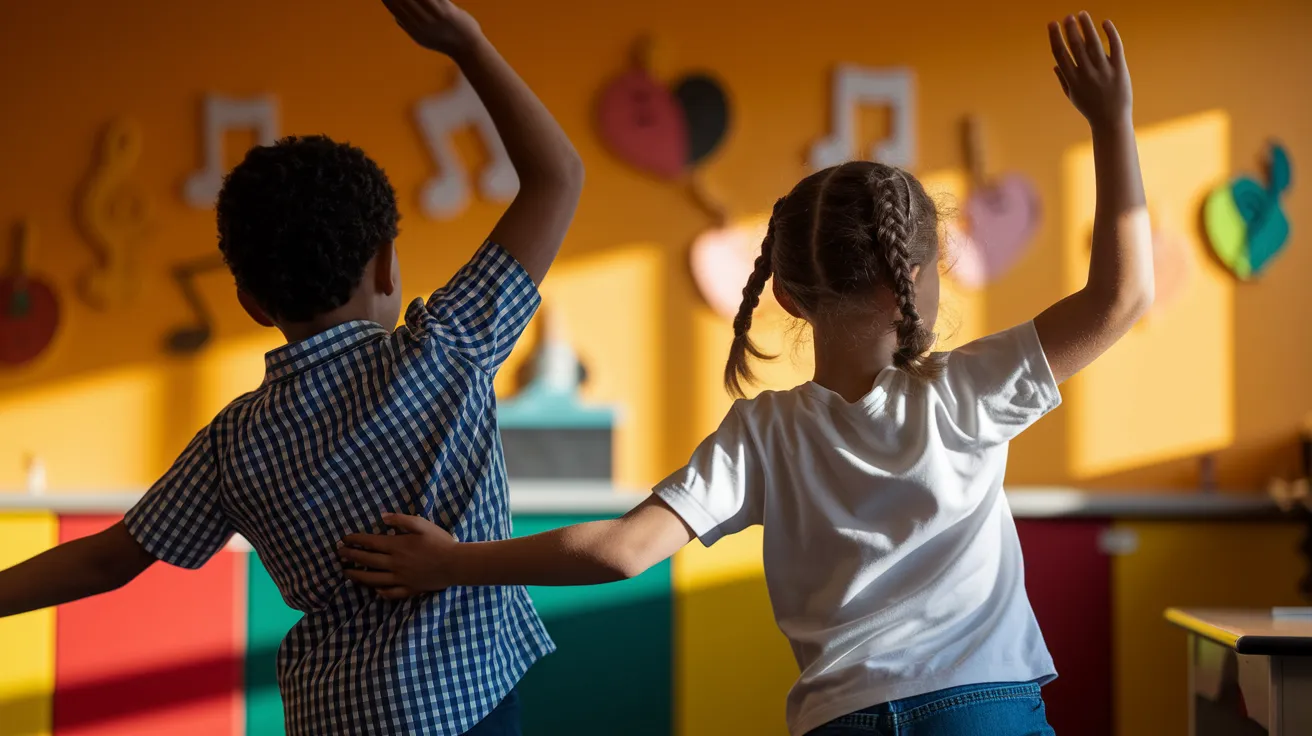
Put on your favorite upbeat songs and dance like nobody’s watching! When the music stops, freeze like a statue until it starts again.
Age group: 3-10 years
Materials: Music player, fun playlist
Pro tip: Add silly poses like “freeze like a robot” or “freeze like a superhero” to make it extra giggly!
2. Animal Action Songs
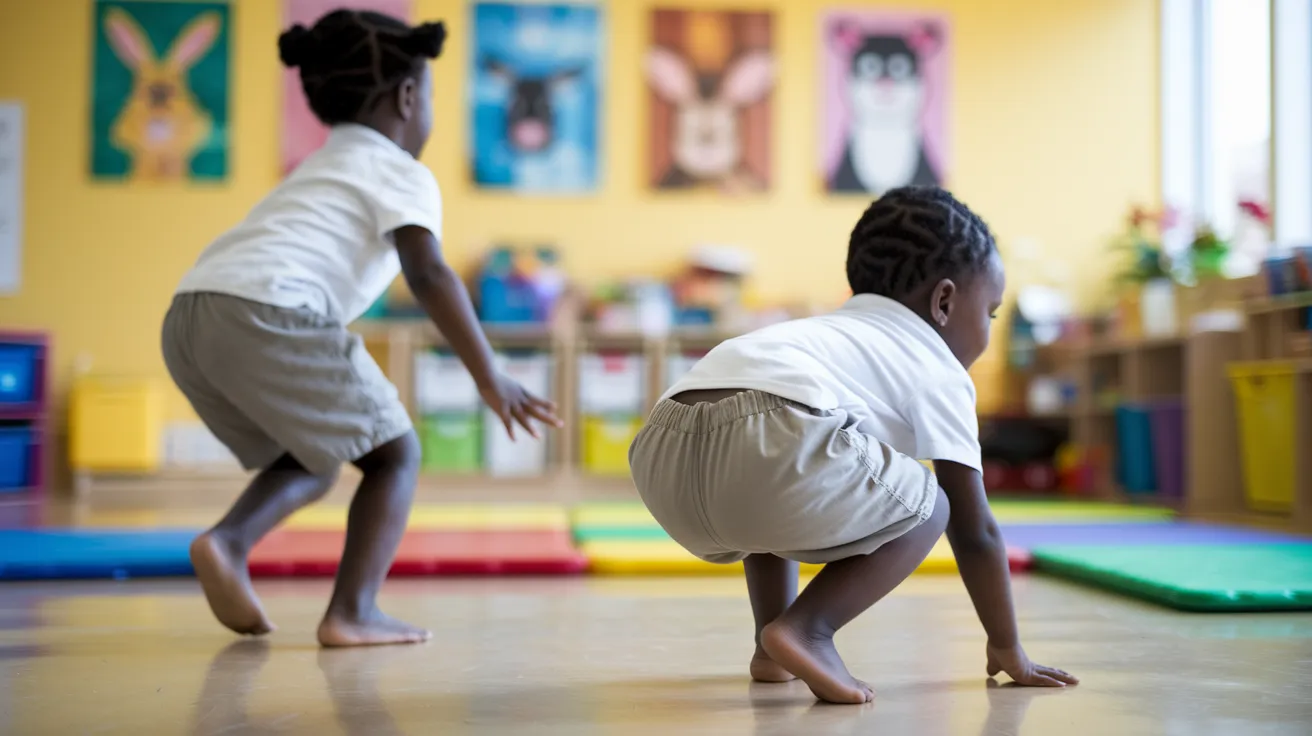
Stomp like elephants, hop like bunnies, and slither like snakes while singing about different animals and their movements.
Age group: 2-6 years
Materials: Animal sound playlist or your voice
Pro tip: Let kids take turns choosing which animal to act out next,they’ll love being the leader!
3. Rhythm Stick Beats
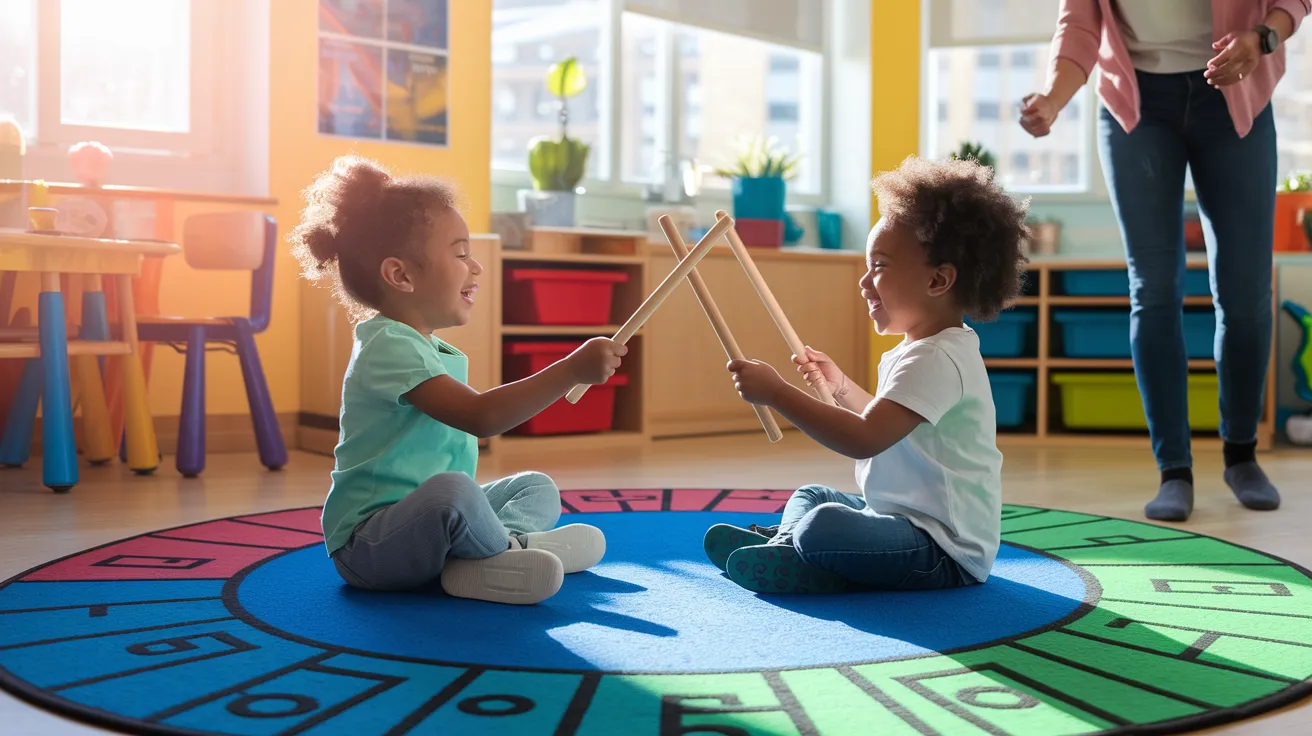
Tap wooden sticks together to create beats and patterns while marching around the room or sitting in a circle.
Age group: 3-8 years
Materials: Wooden rhythm sticks (or wooden spoons)
Pro tip: Start with simple patterns like “tap-tap-pause” and gradually make them more complex!
4. Parachute Circle Time
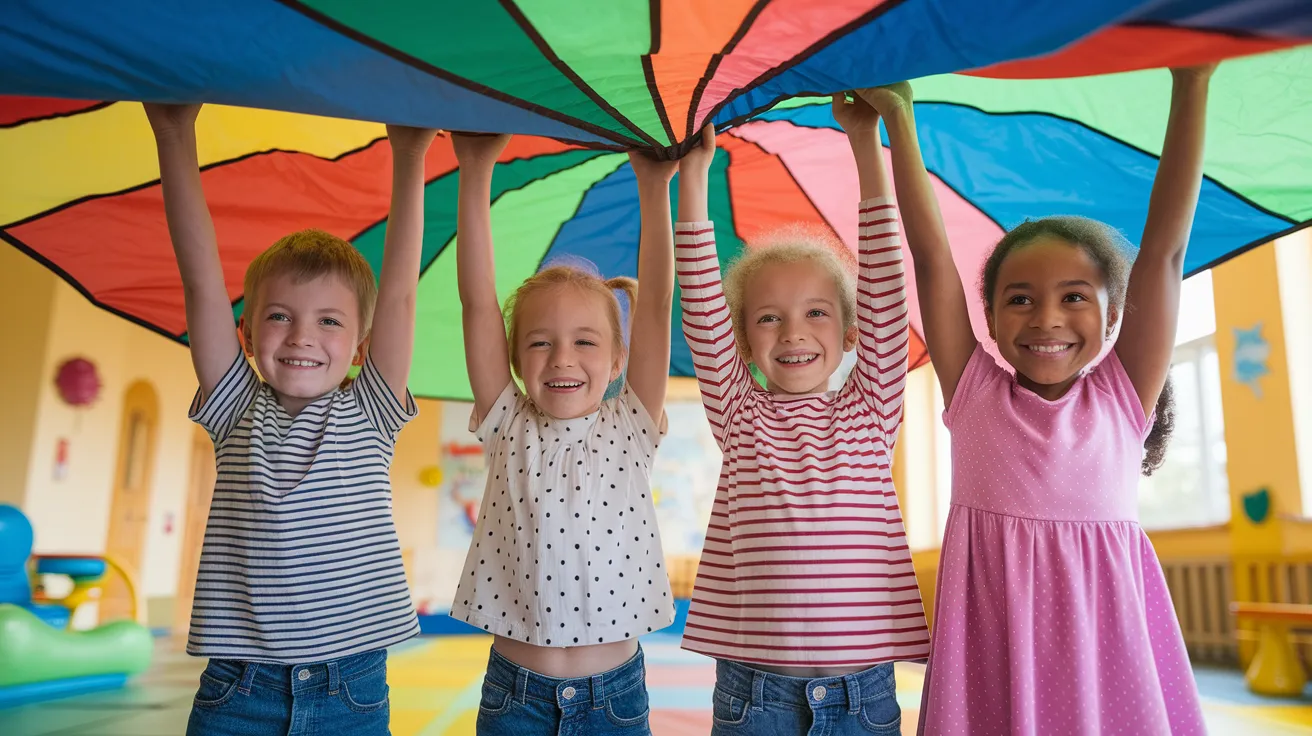
Hold the edges of a colorful parachute and make waves, bubbles, and mountain peaks while singing songs together.
Age group: 3-10 years
Materials: Large play parachute
Pro tip: Toss lightweight scarves or foam balls on top for extra excitement as you make waves!
5. Scarf Dancing
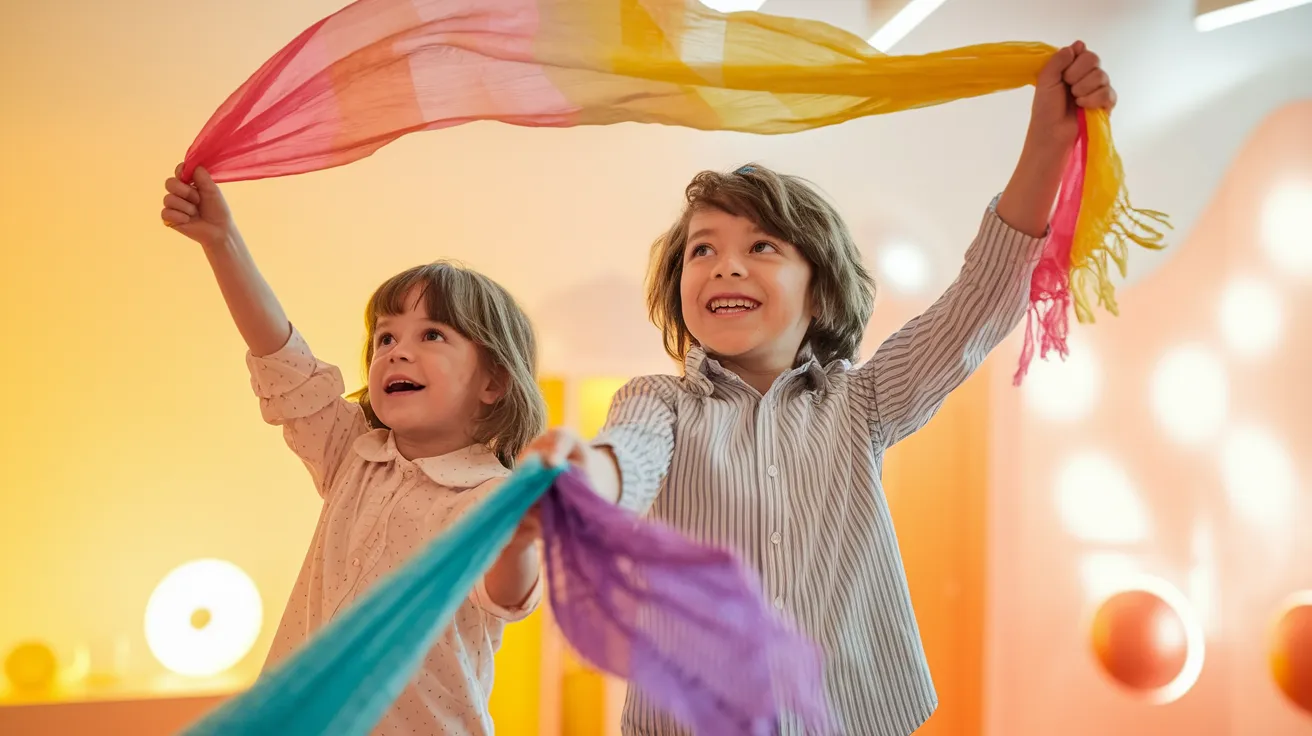
Wave colorful scarves through the air to match the mood of different songs: fast for energetic music and slow for gentle melodies.
Age group: 2-8 years
Materials: Lightweight scarves or ribbons
Pro tip: Try dancing with one scarf in each hand, or let kids pick scarf colors that match their feelings!
6. Body Part Hokey Pokey
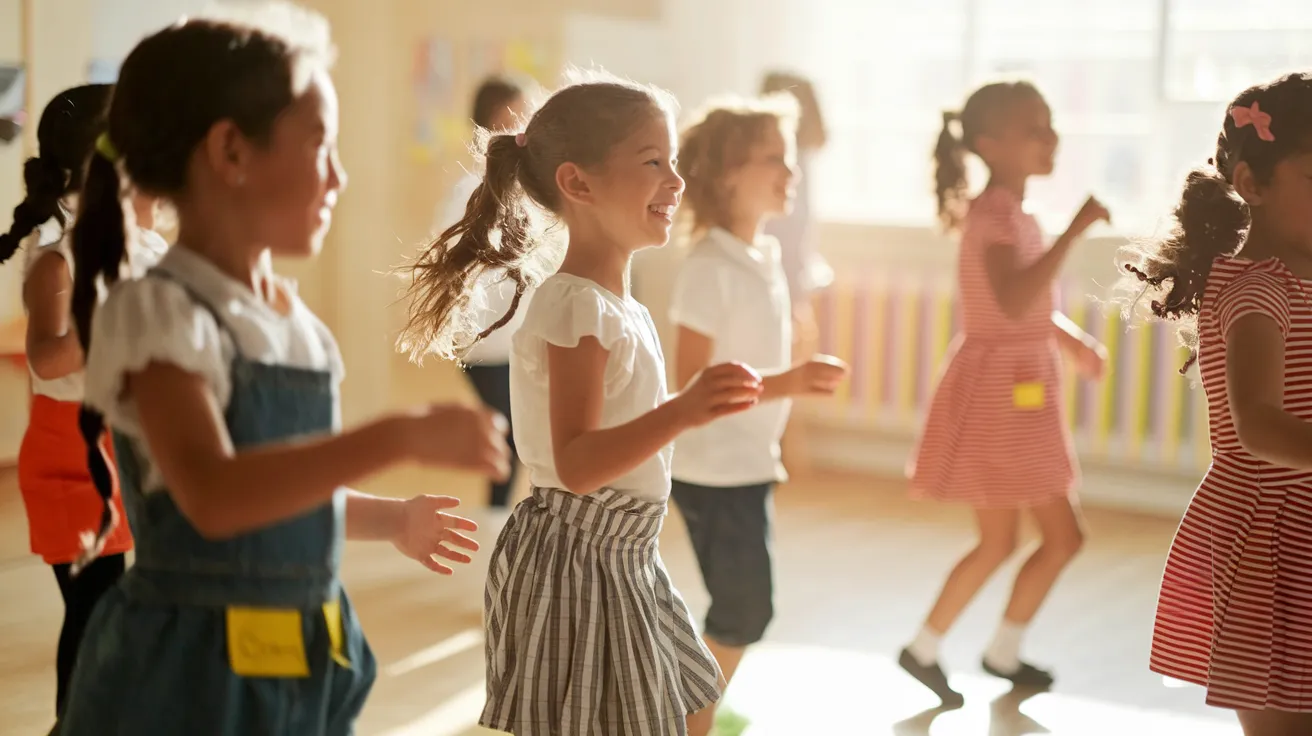
Put your elbow in, put your elbow out, but mix it up with silly body parts like “put your funny bone in” or “put your wiggling fingers in!”
Age group: 3-8 years
Materials: None needed
Pro tip: Let kids suggest new body parts to include, like “put your giggly belly in!”
7. Sound and Shape Walk
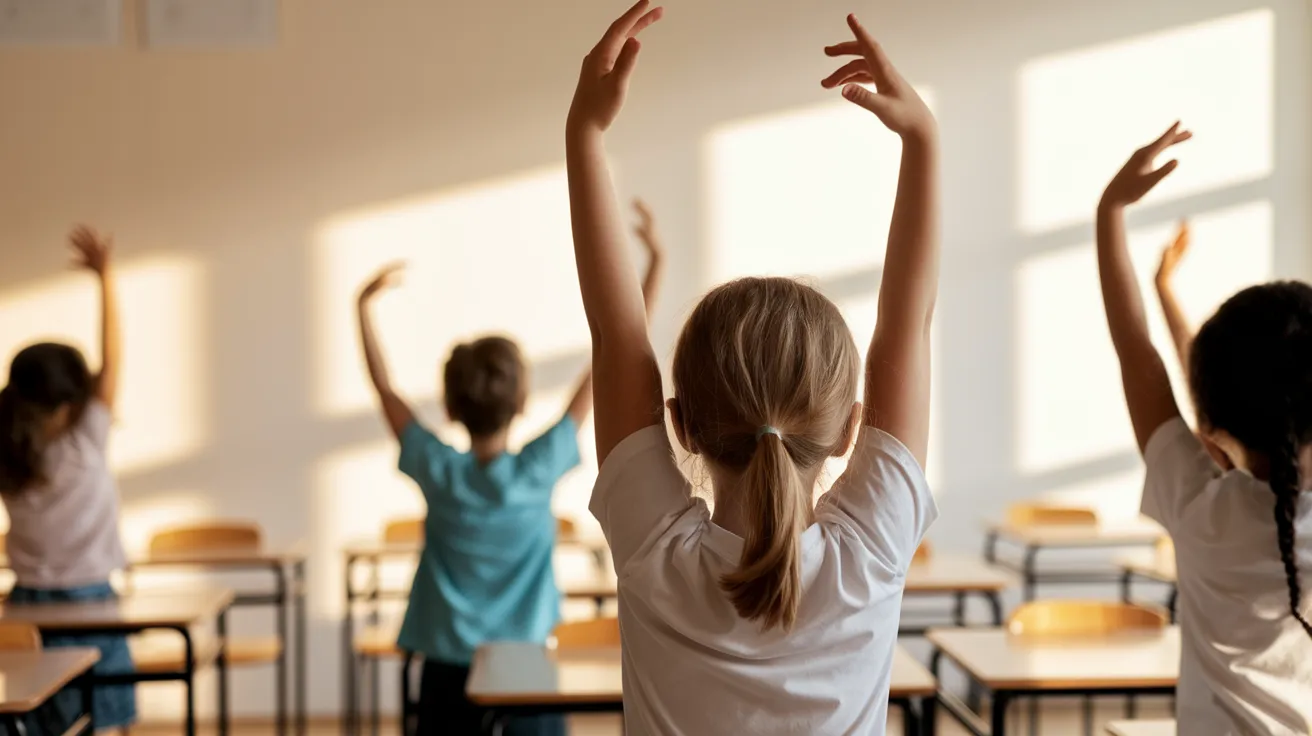
Walk around the room making different shapes with your body while matching the sounds. Circle your arms for round sounds, and make sharp angles for staccato beats.
Age group: 4-9 years
Materials: Music with varied rhythms
Pro tip: Draw the shapes in the air with your whole body, not just your hands!
8. Follow the Beat
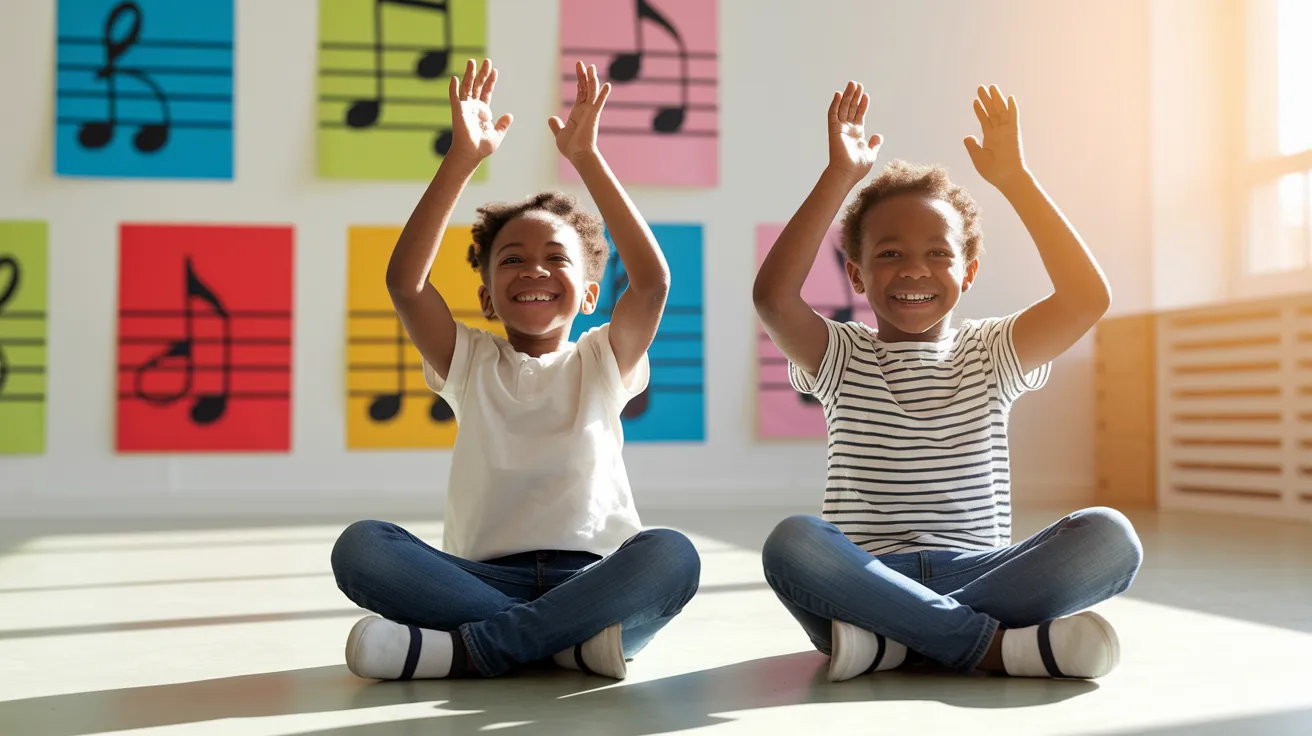
Listen carefully to the music and clap, stomp, or tap the steady beat, sometimes fast, sometimes slow, occasionally whisper-quiet!
Age group: 3-10 years
Materials: Music with clear, varied beats
Pro tip: Try following the beat with different body parts,elbows, knees, or even your nose!
9. Bean Bag Balance
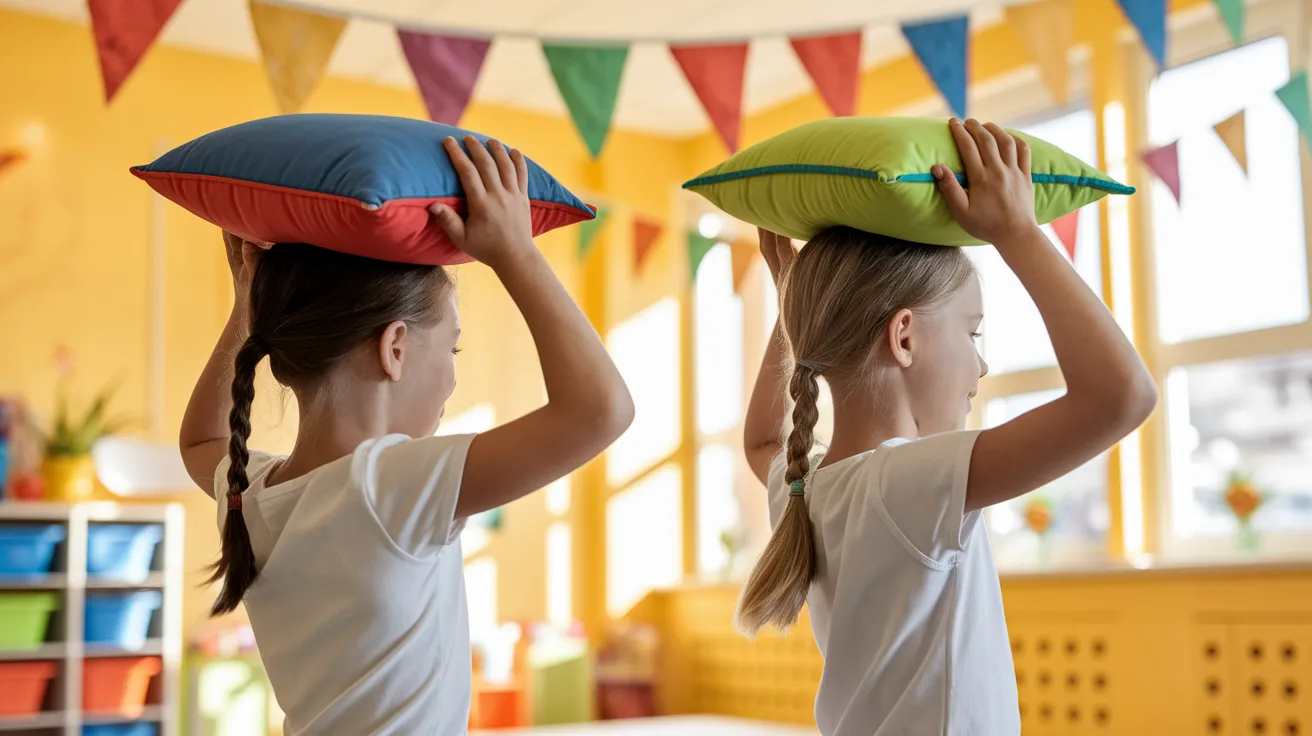
Balance bean bags on different parts of your body while dancing slowly to music. Can you keep it on your head while doing the twist?
Age group: 4-10 years
Materials: Small bean bags or small stuffed animals
Pro tip: Start with easy spots like hands or arms, then challenge kids to try their shoulder or back!
10. Rhythm Relay
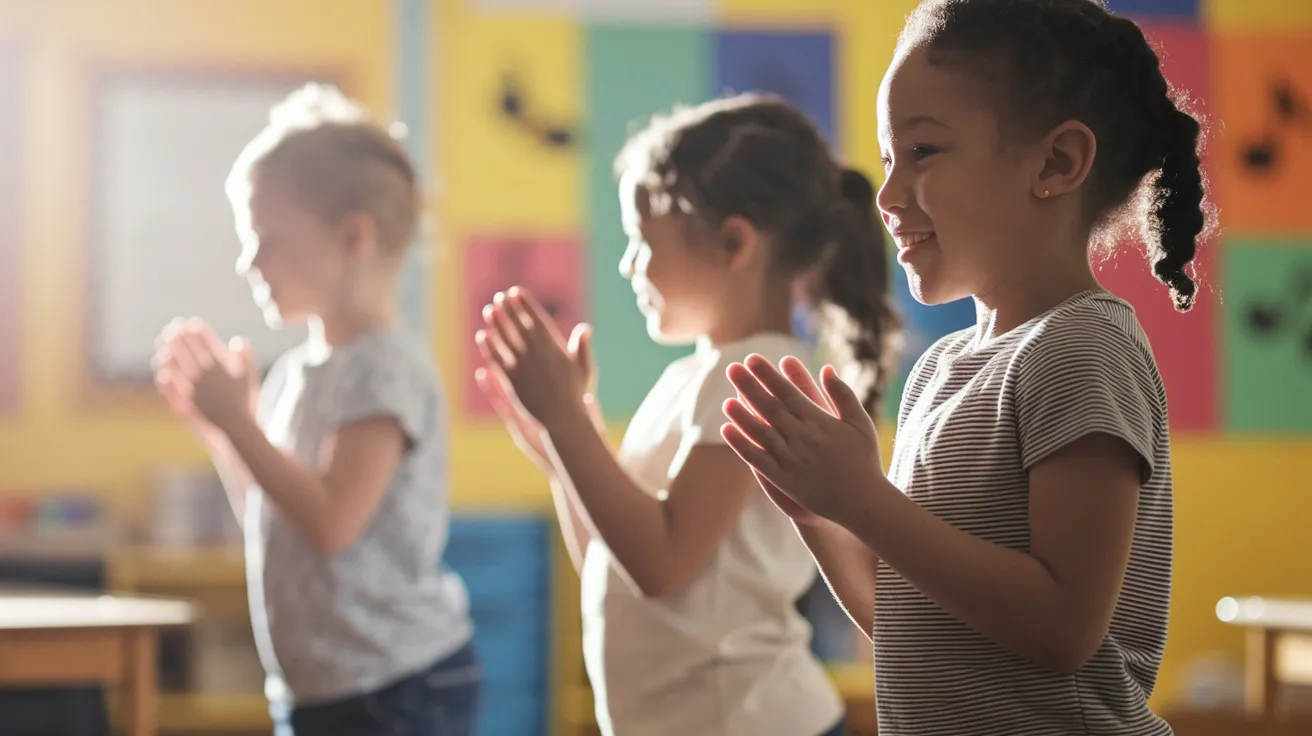
Form teams and pass rhythm patterns down the line by clapping your hands. The last person performs the pattern for everyone to see!
Age group: 5-12 years
Materials: None needed
Pro tip: Start with simple patterns and let kids create their own to pass along the line!
11. Musical Yoga
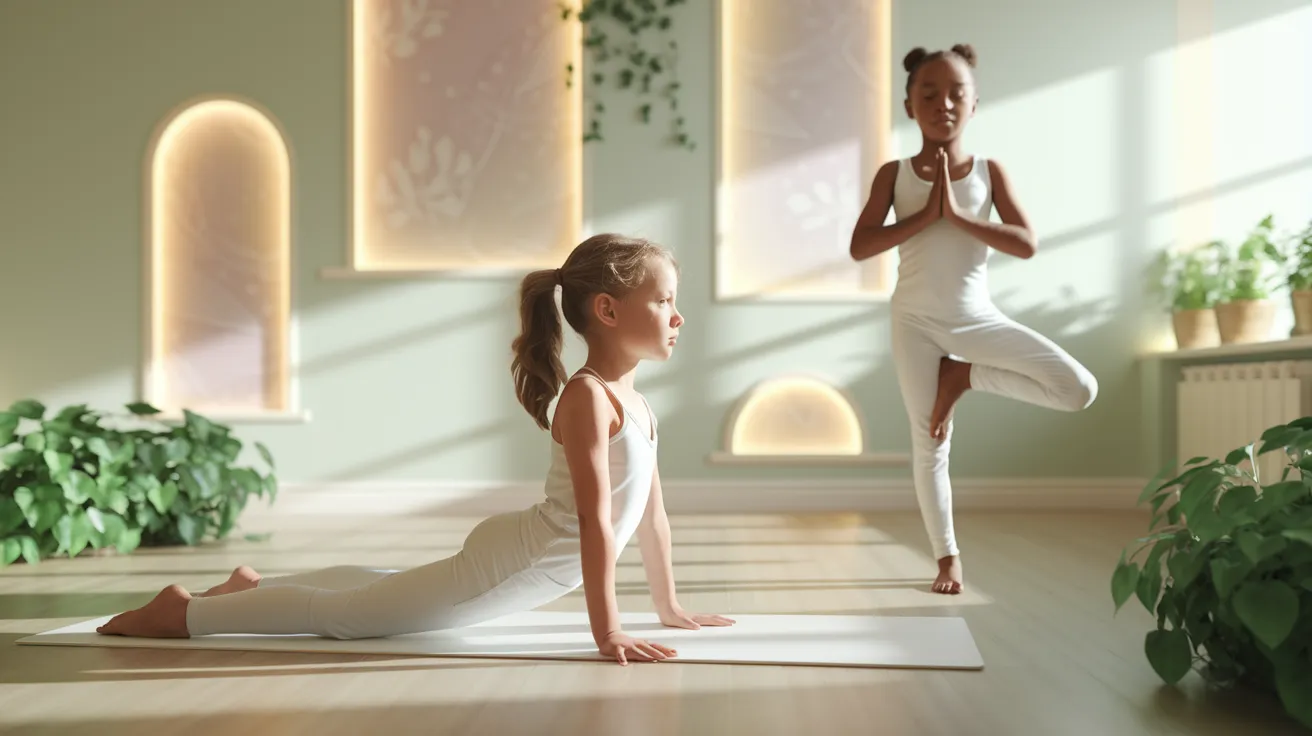
Combine gentle yoga poses with calming music, stretch like a cat, balance like a flamingo, or breathe like a sleeping bear.
Age group: 4-10 years
Materials: Soft background music, yoga mat (optional)
Pro tip: Create a story that connects the poses,like going on an animal adventure through the forest!
Benefits of Music and Movement Activities for Kids
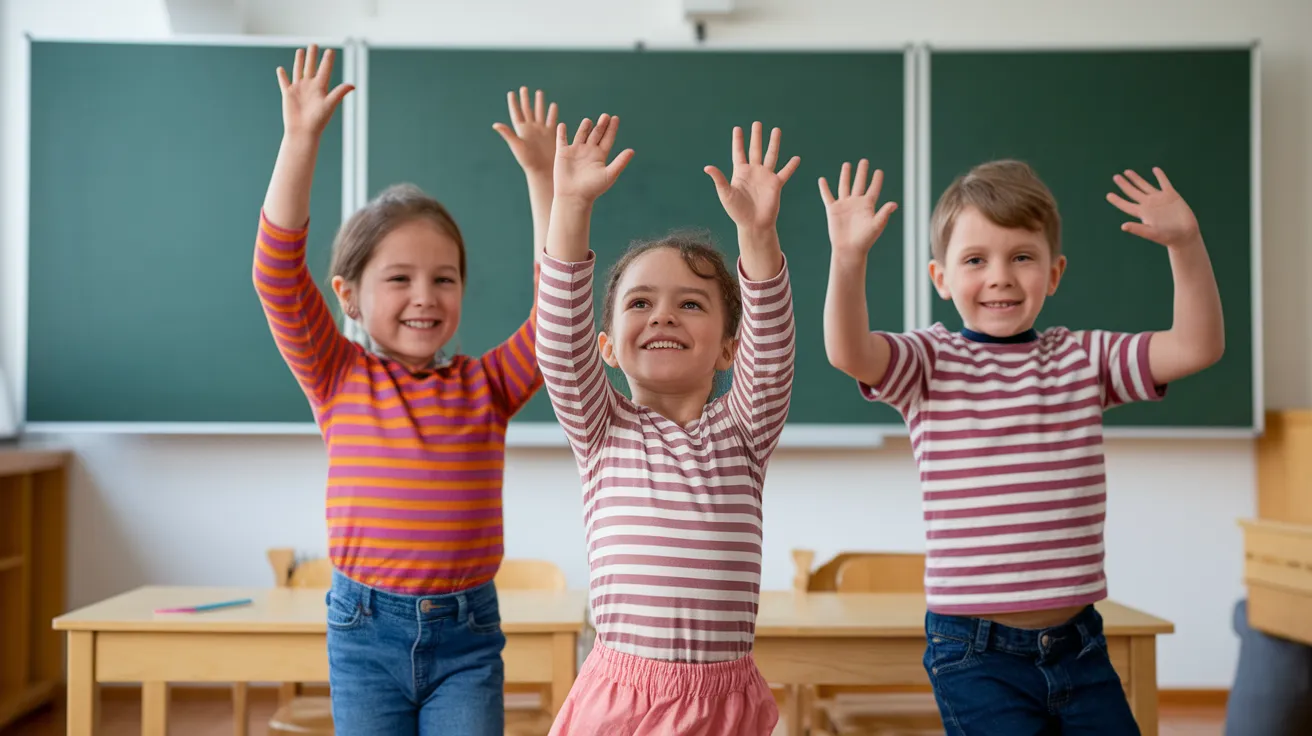
Music and movement aren’t just fun, they’re like supercharged brain food that helps kids grow stronger, smarter, and happier! When children dance, clap, and move to music, amazing things happen in their bodies and minds.
1. Physical Development (Gross Motor Skills, Coordination)
Dancing to music builds strong muscles and teaches children body control. Research shows that children involved in music activities have 23% better balance and coordination than those who are not.
When kids march, jump, or wiggle to the beat, they’re secretly training their brains and bodies to work together perfectly.
2. Cognitive Growth (Memory, Language, Sequencing)
Music activities are like exercise for the brain! Children who sing songs and participate in movement games remember things 40% better and learn new words more quickly.
Following dance steps or clapping patterns teaches children how to organize their thoughts, which helps them with reading, math, and following directions at school.
3. Social and Emotional Learning (Self-regulation, Confidence)
Moving to music helps children learn to manage their emotions and develop a positive self-image. When children dance together, they practice taking turns, sharing space, and working as a team.
Music activities also release happy chemicals in the brain, helping kids feel calm and confident when facing new challenges.
How to Combine Music and Movement in Daily Routines
Turn everyday moments into musical magic! Start your morning with a “wake-up wiggle dance” or sing silly songs while brushing your teeth.
During clean-up time, create action songs like “Pick up toys to the beat!” For transitions, try clapping patterns or marching steps.
Need a brain break? Jump while counting or sway to calm music. Take it outside with nature rhythm walks, stomp like elephants, or flutter like butterflies while researching.
At bedtime, gentle stretches with soft humming help little bodies wind down. The secret? Music and movement make boring tasks more enjoyable and help kids remember routines more effectively.
Tips for Making Music and Movement Inclusive
Music and movement activities should bring joy to every child, regardless of their unique needs or abilities.
- Create Multiple Ways to Join In – Offer choices like sitting, standing, or moving in a wheelchair.
- Use Visual Cues and Picture Cards – Create picture cards showing different movements.
- Design Sensory-Friendly Alternatives – Offer noise-reducing headphones for children who are sensitive to loud sounds.
- Celebrate Every Child’s Unique Contribution – Assign memorable roles, such as “Beat Keeper” or “Instrument Helper.”
Remember, the most beautiful music happens when every child feels welcome to participate in their wonderful way. These small adaptations create big smiles and lasting memories for children of all abilities.
Special Tip: Keep a “movement menu” with pictures of different ways to participate – kids love choosing their own adventure, and it helps them feel in control of their musical experience!
Common Mistakes to Avoid
Even the best dance parties can go wrong if you’re not careful! Here are the top mistakes that can turn your fun movement session into a chaotic mess, and how to avoid them:
| Mistake | Why It’s a Problem | Easy Fix |
|---|---|---|
| Overstimulation with loud music | Kids get overwhelmed, cranky, or overly excited | Keep volume at conversation level; watch for signs of stress |
| Not adjusting activities to the age group | Toddlers can’t do teen moves; teens get bored with baby songs | Match difficulty to developmental stage; have backup options |
| Neglecting warm-up or cool-down | Kids jump straight into chaos or end up feeling wound up | Start with gentle stretches; end with calming movements |
Remember, the goal is joyful movement, not perfect performance! Watch your little dancers for cues; they’ll let you know if the music is too loud, the moves are too hard, or if they need time to settle down.
Summing It Up
Music and movement activities change ordinary playtime into powerful learning experiences that improve your child’s development in remarkable ways.
These fun sessions promote stronger muscles, better coordination, improved language skills, and emotional growth, providing lasting benefits for your child.
Get started! Play your favorite song and dance with your child; watch their face light up as they move, learn, and grow.
Remember, every wiggle, jump, and clap is building their brain and body simultaneously. What music and movement activities will you try first with your family today?
Time to get those little feet moving! Share your family’s dance party moments in the comments.
Which music and movement activity made your kids giggle the most? We’re ready to groove along with your stories!






